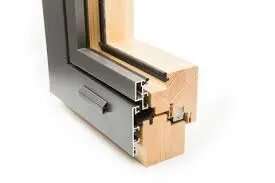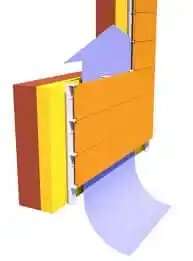Cladding is one of the most common and widely used construction techniques,
as it is a covering that protects the outer surface of a structure from harsh environmental conditions.
The most commonly used materials for cladding are stone, glass, wood, concrete and metal.
A variety of other materials are used nowadays, especially with the increasing demand for cladding.
The characteristics of the cladding material are also a determining factor in its selection,
and the cladding material may facilitate greater mechanical durability, and may or may not be water resistant.
It should also add to the aesthetic value of the property, and above all, it should require minimal repair and cleaning.
One of these characteristics is given priority over the others, in a particular type of cladding.

There are different types of special cladding, including:
Plasterboard cladding
Plasterboard cladding is used for interior wall and ceiling cladding, as it is a method of constructing drywall
They are usually manufactured using calcium sulfate dihydrate or gypsum and pressed between the reinforcing device and the backing.
These flexible panels can be easily cut with a craft knife, and a smooth finish can be obtained by using strapping tape over the plasterboard joints.
Plasterboards are called wall panels, gypsum boards, or wall panels.
The panels also effectively provide acoustic insulation, fire protection and thermal screening.
It also helps control condensation and potential damage, in areas with high humidity.
Certain types of gypsum board are also available to protect the structure from shock and harsh weather.

Rain screen livery
It is a rain cladding that has an outer shell of a ventilated back cladding, and is attached to the surface of a new or existing structure.
It is also a type of double-walled construction, where the primary function of the outer layer is to protect the building from rain.
While the function of the inner layer is to provide adequate thermal insulation and withstand wind load.
In addition, there is an air cavity between the cladding material and the ventilation bearing wall.
Insulation is provided between the two, depending on the design,
otherwise the load-bearing wall itself can act as an insulating medium.
The rain-coated cladding is known to be durable and also prevents the formation of cracks,
and the energy efficiency of the overall structure is increased due to thermal insulation.

Green wall cladding
Green wall covering is also known as living wall or vertical garden.
Incorporating green walls into a new structure has become a desirable feature,
especially with the growing awareness of environmental protection.
Green building also encourages the use of green walls and is a reliable way to improve a building’s appearance and energy levels.
Green walls can also be installed indoors as well as outside the building,
and plants are attached to a growing medium consisting of soil, water or stone.
They are then placed on a structure that forms a cladding system,
and the growth medium mix can be assembled into loose media systems, covering, mat, and skeletal systems.
The green wall can provide a great view, and also works as an air filtration system.
This is done by evaporation in plants.
The air in summer stays cooler, thus saving energy, and plants also block high-frequency sounds by reflecting and refracting the frequencies.
Sluice window
Window sealing is also known as window cladding or metal window cladding.
An existing wooden window frame can be protected with aluminum or vinyl laminate, without a complete replacement of the frame and finishes.
The frames and exterior finishes of wooden windows also begin to deteriorate over a period of time, increasing the cost of maintenance.
While aluminum or vinyl can be molded to the existing decoration, it is also available in different shades. Hence, the metal does not need to be painted.
Caulking improves the overall appearance and durability of a wooden frame, and acts as a seal between the window and the wall.
This prevents leakage or water damage, and this also increases the life of the slip.
For more architectural news


 العربية
العربية
Pingback: مستقبل التصميم الداخلي - ArchUp